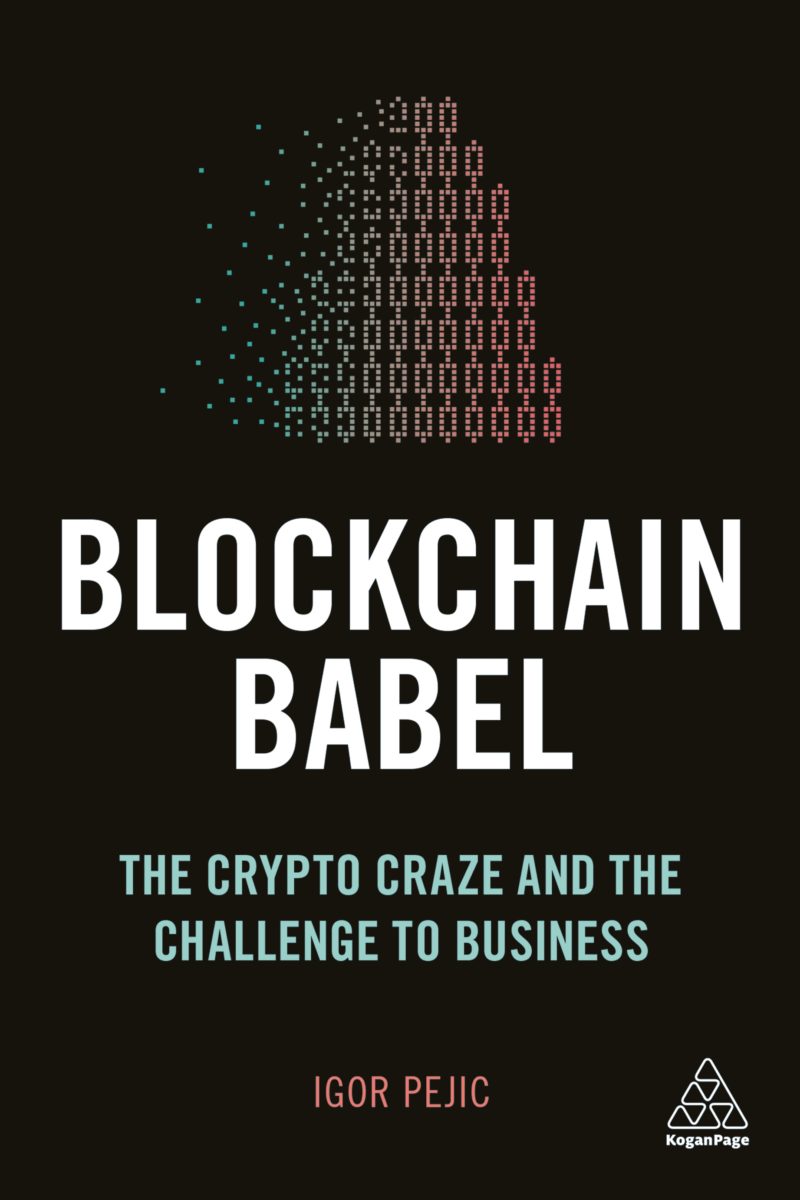Why the Blockchain Disenchantment is Premature
By Igor Pejic, speaker, banker, and author of Blockchain Babel
The hysteria about cryptocurrencies is ebbing. Their value is down by 85% from its peak and no end of the crypto-winter is in sight. And the public disappointment is rubbing off on the technology powering cryptocurrencies – the blockchain. The trend forecast of Gartner Inc., a steady weather vane in the tech world, is a case in point.
The blockchain has been invented a mere 10 years ago Share on XIn the list of impactful technologies, the blockchain plunged to the bottom last month. Forrester, another research firm, came to a similar conclusion already one year earlier. So did companies implementing it. SWIFT, the network underpinning most of the world’s monetary transactions, said blockchain was not yet ready for mainstream use, despite a successful proof-of-concept test. The reason: operational challenges when scaling.
In Gartner's list of impactful technologies, the blockchain plunged to the bottom last month Share on XMedia and tech vendors alike have fueled a frenzy that gorged on stories of early crypto-millionaires, overblown claims of disruption, and a deep anti-banking sentiment. This mania has been sustained by pernicious myths such as the equalization of cryptocurrencies and blockchain, or the belief the blockchain would rid the world of all institutions of trust. Research and consulting firms kept claiming the technology is closer to its break-out moment every day, while the big bang has stayed away. Is the blockchain just a placebo that made us feel better about the future of finance without actually offering a cure?
SWIFT, the network underpinning most of the world’s monetary transactions, said blockchain was not yet ready for mainstream use Share on XInnovation patterns, observable from historic example, are the best predictor of a technology’s trajectory. The first lesson is that benefits do not accrue overnight. Only thirty years after the electric motor made its debut in factories did productivity rise. It took a new generation of managers to fully grasp its potential and make not only changes to the machinery, but also to business processes. The blockchain has been invented a mere 10 years ago, as the mechanism enabling bitcoin. Years passed until the technology was isolated from the currency-idea.
Media and tech vendors alike have fueled a frenzy that gorged on stories of early crypto-millionaires Share on XFrom there it was long way until the more efficient, centralized models – usually referred to as Distributed Ledger Technology (DLT) – conquered the mainstream. While the public pressure for disruptive results is higher today than in the age of the electric motor, it does not change the fact that each new technology must pass all three stages – fluid, transitional, and specific. An intense phase of search for the right product design is incumbent before embarking on efficiency gains.
Is the blockchain just a placebo that made us feel better about the future of finance without actually offering a cure? Share on XYet the introduction of the ATM offers the most striking parallel to blockchain’s path. Technologically, the 1960-ies resembled today’s world. Computers and online were the fuzzy buzz-words rather than blockchain, but the same talk about radical disruption had hijacked public debate, accompanied by the same lack of specificity. Citicorp pioneered the idea that machines for cash withdrawal would change banking.
The introduction of the ATM offers the most striking parallel to blockchain’s path Share on XThe journey to implementation was long and fraught with difficulties. Tech-incumbents refused to cooperate, inertia suffocated in-house initiatives and setting up an independent company flopped. Eventually, Citicorp succeeded only when it partnered with a small IT-firm in Los Angeles. Once the on-line transaction processing network was built, the question was how to give customers access to this new magic machines. When they were eventually installed in the bank’s branches, skepticism did not abate. Managers found ATMs more expensive than human tellers; employees fretted they would be job-killers. Similar arguments echo around the blockchain.
The hysteria about cryptocurrencies is ebbing. Their value is down by 85% from its peak and no end of the crypto-winter is in sight Share on XIt took Citicorp years to develop the first ATM and years to make it more efficient than the legacy system of withdrawing money. Yet, when it unfolded the competition did not draw level with Citicorp until the early 1980-ies. The bank’s market share skyrocketed from 4% to over 13%. In 1988 the customer base had tripled as compared to 1977. And the number of branch employees did not drop. On the contrary: In the 11 years it went from 7.100 to 8.400. Miniscule and repetitive tasks were replaced by customer-facing ones, thus making former tellers happier and more profitable.
Legacy systems might still be more efficient than their blockchain alternatives, but the future is a one-way street Share on XBlockchain is suffering from public fatigue, but it is already at the stage of working prototypes. The fluid exploration phase is drawing to a close as witnessed by the stark decline in ICOs, the crypto-equivalent of IPOs. The second indication is the avalanche of successful pilots led by incumbents and consortia. From Walmart to Wall Street – an impressive roster of the world’s largest companies have found real-life use cases. Legacy systems might still be more efficient than their blockchain alternatives, but the future is a one-way street. Even SWIFT is opening up again on the blockchain by embracing Corda, a blockchain-protocol preferred by most banks.
Blockchain is suffering from public fatigue, but it is already at the stage of working prototypes Share on XMIT anticipates that blockchain will become “boring” in 2019. It is a time of reckoning in which the forlorn initiatives die and the right ones are tweaked. Remittances, clearance, settlement – they are all use cases comparable to the cash machines in Citicorp’s branches. It is only a matter of time until they surpass legacy systems’ efficiency.
MIT anticipates that blockchain will become “boring” in 2019 Share on X
Blockchain Babel: The Crypto-Craze and the Challenge to Business is available now at £14.99









